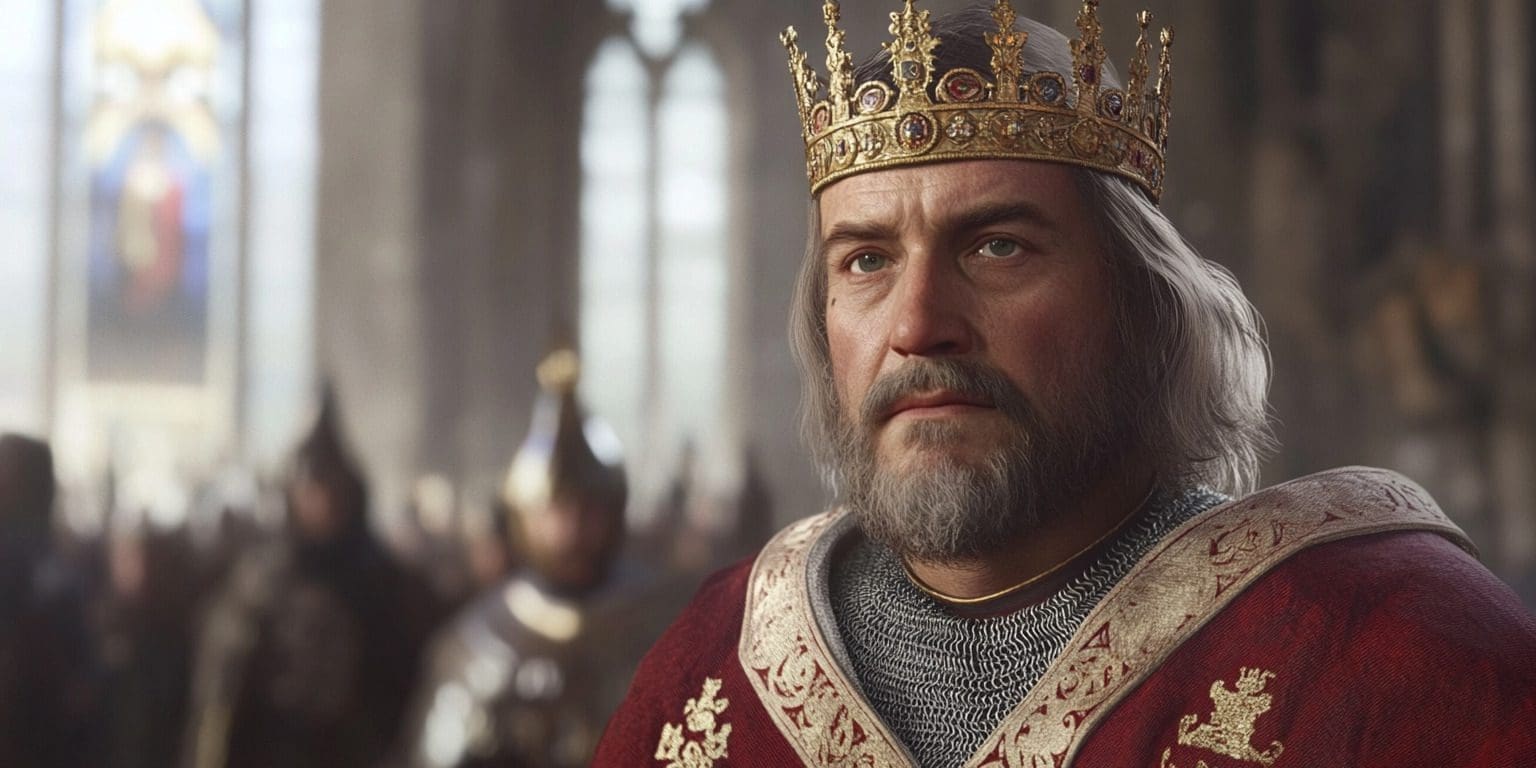Your basket is currently empty!

King Henry III: A Study in Medieval Monarchy
King Henry III of England, who reigned from 1216 to 1272, is often overshadowed by the more dramatic figures of his father, King John, and his son, Edward I. However, Henry’s reign is significant for its longevity, its periods of peace and reform, and its impact on the development of English governance. This article will explore the life, reign, and legacy of King Henry III, shedding light on his achievements, struggles, and contributions to medieval England.
Early Life and Ascension to the Throne
Henry was born on October 1, 1207, at Winchester Castle, the eldest son of King John and Isabella of Angoulême. His early years were marked by political turmoil. When King John died in 1216, England was in the midst of a civil war known as the First Barons’ War. The barons, dissatisfied with John’s rule, had invited Prince Louis of France to take the English throne.
At the age of nine, Henry was crowned king in Gloucester Cathedral. His coronation was a hurried affair due to the ongoing war, and he was initially crowned with a simple gold circlet rather than a traditional crown. The early years of his reign were dominated by regencies, first under William Marshal, the Earl of Pembroke, and later under Hubert de Burgh.
Struggles and Rebellions
Henry’s reign was marked by intermittent conflicts with the barons. The Magna Carta, initially issued by his father and reissued during his own reign, was a source of continuous contention. The barons sought to enforce the charter’s promises of limiting royal power and ensuring feudal rights.
In 1232, Henry dismissed Hubert de Burgh and began to rule independently. However, his reliance on foreign advisors and favoritism towards his French relatives caused friction with the English nobility.
This discontent led to the Provisions of Oxford in 1258, a set of reforms imposed by the barons to limit the king’s authority and establish a council to oversee governance.

This discontent led to the Provisions of Oxford in 1258, a set of reforms imposed by the barons to limit the king’s authority and establish a council to oversee governance.
The tensions culminated in the Second Barons’ War (1264–1267), led by Simon de Montfort, Earl of Leicester. The conflict saw Henry captured at the Battle of Lewes in 1264, but he was eventually freed by his son Edward (later Edward I) after the Battle of Evesham in 1265. The war ended with the Dictum of Kenilworth in 1267, restoring royal authority but also acknowledging some of the barons’ grievances.
Reforms and Governance
Despite these conflicts, Henry’s reign saw significant developments in governance. The establishment of the English Parliament is one of his notable legacies. Although the origins of Parliament predate Henry, his reign saw its evolution into a more structured institution. The Provisions of Oxford and the subsequent reforms laid the groundwork for a representative council that included not just nobles but also commoners.

Henry was also a patron of the arts and architecture. His most enduring architectural legacy is Westminster Abbey. He commissioned the rebuilding of the abbey in the Gothic style, inspired by French cathedrals. The new Westminster Abbey became a symbol of royal authority and a center of religious and political life.
Personal Life and Character
Henry’s personal life was marked by his devout faith and his family relationships. He married Eleanor of Provence in 1236, and their marriage produced several children, including his successor, Edward I. Eleanor was an influential queen, involved in political and cultural affairs. Their court was known for its patronage of the arts and learning.
Henry’s piety was evident in his numerous religious foundations and his devotion to the cult of Edward the Confessor, whom he adopted as his patron saint. His religious zeal sometimes led to tensions with the clergy and the papacy, particularly over issues of church appointments and revenues.
King Henry III’s Legacy
King Henry III’s reign was one of contrasts: periods of peace and prosperity interspersed with rebellion and conflict. His efforts to centralise royal authority often brought him into conflict with the barons, yet these struggles also contributed to the evolution of English governance. The establishment of Parliament and the architectural grandeur of Westminster Abbey are lasting testaments to his reign.
Henry III’s legacy is complex. He was not the most forceful or successful monarch, yet his reign was significant for its longevity and the developments in governance and culture that occurred during it. His struggles with the barons and his patronage of the arts left an indelible mark on English history, shaping the medieval monarchy and paving the way for future kings.
In the annals of English history, King Henry III may not stand out as a warrior king or a great reformer, but his reign is a crucial chapter in the story of medieval England. His life and reign offer valuable insights into the challenges and achievements of monarchy in a time of change and development.
Discover more from Histories and Castles
Subscribe to get the latest posts sent to your email.
-
Spitfire T-Shirt | Battle of Britain Union Jack TeeShirt
£19.10 – £35.86 -
Mystic Eye Talisman Pendant – Medieval Symbols of Luck
Original price was: £35.99.£29.99Current price is: £29.99. -
Vintage Knights Templar Cross Ring
£8.76 – £8.92 -
Angel Wing Heart Charm – Vintage Remembrance Jewellery
£13.61 -
Hand Of Fatima Hamsa Pendant
£20.49 – £30.15 -
Celtic Knot Snake Pendant – Medieval Protection Amulet
£14.57











